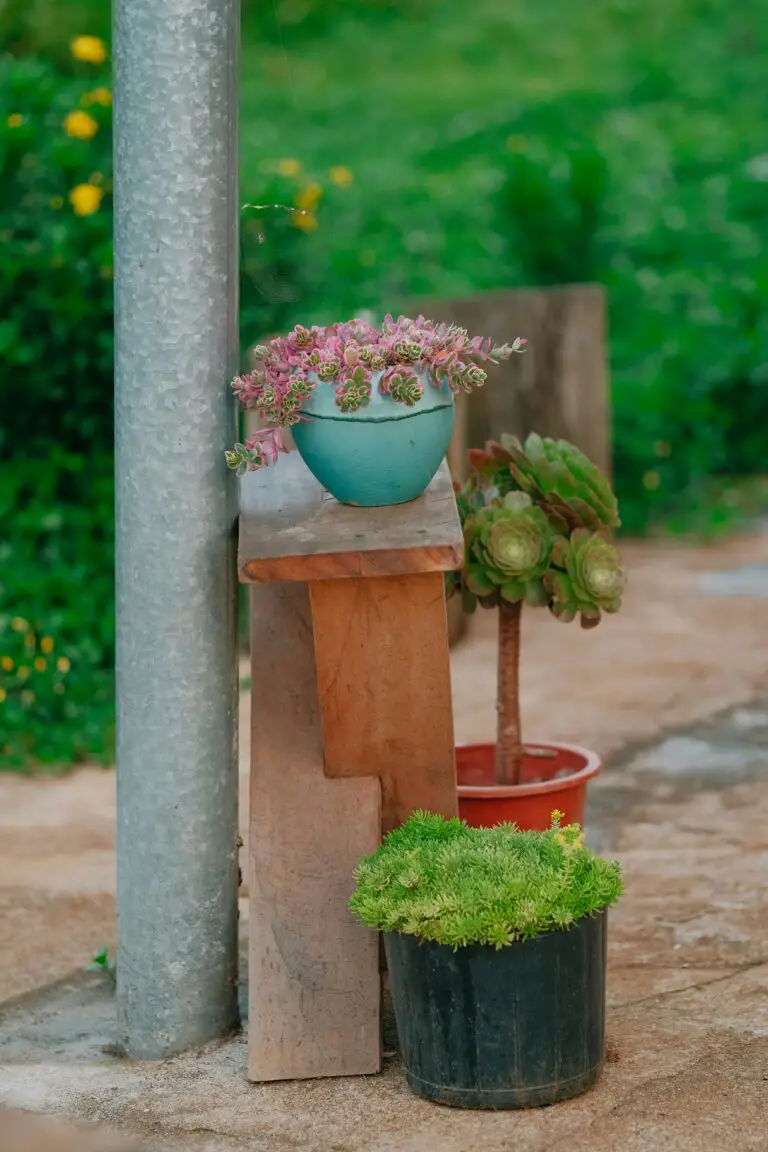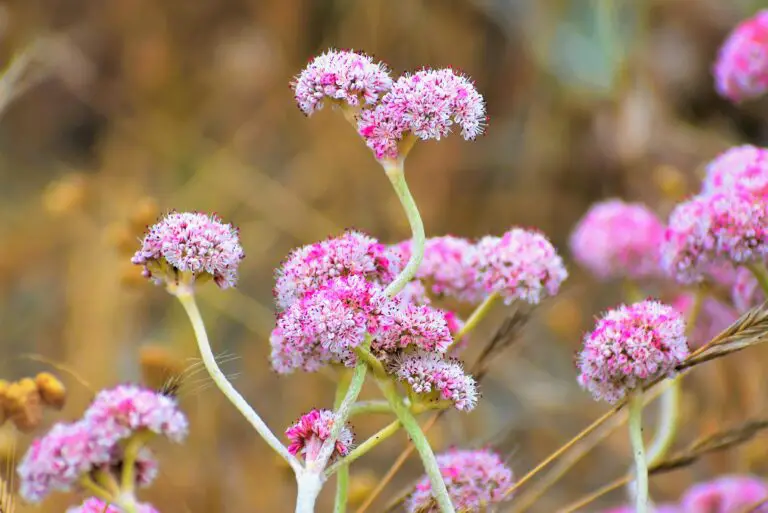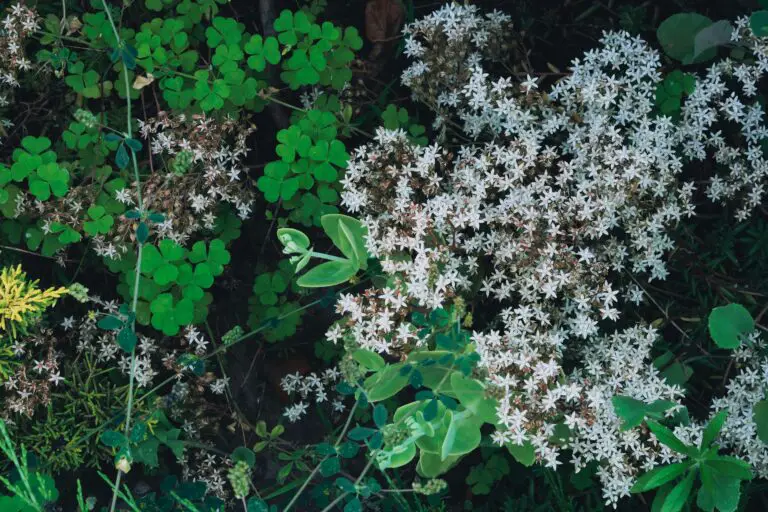Introduction to Sedum
Welcome to a world where resilient and charming succulents blanket stony outcrops and garden landscapes with colorful vigor. Meet Sedum, the diverse and widely adored genus also known as stonecrop. We’re not just talking about a handful of varieties; this genus boasts an astonishing array of species, each with its own unique flair. Often celebrated for their hardiness and low-maintenance charm, these succulents have captured the hearts of garden enthusiasts worldwide.
Imagine a living tapestry of succulents—Sedum varieties—painting rocky hills and manicured gardens with bursts of color and texture. From the plump, jade-like foliage of Sedum spectabile to the cascade of ruby-red leaves found in Sedum ‘Dragon’s Blood’, these plants offer a remarkable palette for creative landscaping. They don’t just survive in challenging conditions; they thrive, making them the go-to choice for places where other plants might shy away. Discover the rich diversity of Sedum species and how each brings something special to the table, or in this case, the soil.
Have you heard about that sunny spot in your friend’s backyard where nothing seems to grow? Introduce them to Sedum, and watch as this miraculous genus turns the once barren space into a seasonal spectacle. Learn more about creating your own Sedum sanctuary right at home.

Sedum Species and Their Diverse Habitats
Imagine a plant that thrives on neglect, reveling in arid deserts where the sun blazes like a cosmic torch. Picture that same species clinging to life on sheer rocky outcrops where the soil is no more than a myth. Welcome to the resilient world of Sedum, a genus consisting of species with a survivalist streak, each adapted to a unique part of nature’s vast canvas.

The stonecrops, as they’re often called, aren’t fussy. From the baked earth of the desert where moisture is a precious commodity, to the alpine slopes where the air grows thin, these plants have made their home. In gardens, they ask but for a sliver of sunlight and a whisper of soil, and in return, they gift us with a lush tapestry of foliage and flowers.
Sedum’s Rocky Rendezvous
Among the rugged terrain of mountainous landscapes, Sedum species like Sedum reflexum and Sedum album have evolved to commune with stones rather than soil. They often squat in rocky crevices, spilling over stone walls or nestling between boulders, their roots grasping the merest crumbs of nourishment.
In these aerial aeries, they are a haven for pollinators, a microcosm of life clinging defiantly to the hard edges of the world. Here, against the azure backdrop of the sky, their success lies not in the struggle, but in embracing the Spartan conditions that would spell doom for less hardy beings.
An Arid Affair with the Desert
Not ones to shy away from extremities, Sedum species such as Sedum stahlii flourish amidst the parched landscape of the desert, savoring the sparse rainfall with thick, water-storing leaves. These sun-worshippers wear a coat of waxy cuticle that reflects sunlight, akin to applying sunblock on a bright summer day.
The deserts are not barren wastelands but a stage for Sedum’s performance of persistence. In this environment, they stand as miniature sentinels, a testament to life’s tenacity under the searing sun. Their presence here is a colorful interjection, a burst of vitality amid the monochromes of sand and stone.
Discovering more about how to grow and care for Sedum can be an enriching adventure, inviting us to witness the ingenuity with which these plants carve their niche in nature’s vastness. Their ability to adapt is a lesson in resilience, a masterclass in making the most of every raindrop, sunbeam, and mineral.
Within the vastness of Sedum’s world, we find a mosaic of environments, each painted with the brush of evolution. It’s a world where simplicity reigns, and yet, it brims with nuances and adaptations that any nature lover would revel in exploring.
Ideal Growing Conditions for Thriving Sedum
Step out into the world of lush, hardy sedums and you’ll find they’re not just survivors; they’re enjoy thriving when their favorite conditions are met! These spirited plants are the chameleons of the plant kingdom, adeptly adapting to a range of environments, yet they do have their preferred settings where they truly flourish. So, what does make a sedum’s heart sing, you ask? Let’s stroll through their ideal haven, shall we?
First off, sedums are sun-worshippers, bathing in the golden rays. Most sedum species savor full sunlight, revelling in at least six hours of direct light daily. Picture a sedum in the midst of a sun-drenched rockery, its fleshy leaves glinting like jewels; this is the scene of a plant in its glory. However, don’t fret if your garden dances more with dappled shade, as many sedum varieties are versatile, still performing admirably with a touch less sun.

Sure, sedums are easy-going with light, but they’re downright picky when it comes to soil. They’re in their element in well-draining, gravelly terrain—think the type of soil that would make most plants throw a tantrum. Add a bit of organic matter, and you’ve concocted the perfect soil mix. Overly moist, wet soils? Sedums will turn their noses up. They prefer their roots to be on the dry side, free from the clutches of soggy soil that can lead to root rot.
Temperature and climate chime in on the sedum symphony, too. From the balmy mediterranean climes to the chill of temperate zones, sedums can generally handle a range. However, they echo the Goldilocks story, liking conditions not too hot, not too cold, but just right. Nevertheless, some sedum species will surprise you with their resilience in frosty winters, their leaves tinged with a hint of their own winter blush.
For those getting started on their gardening journey or looking to expand their savvy, insightful tips on nurturing these versatile beauties can illuminate the path to a thriving sedum sanctuary. Meanwhile, gardeners can rejoice in the knowledge that with the right setup, their sedum story is set for success, painting their green canvas with a palette of tenacity and color.
Worldwide Distribution: Where to Find Sedum
Imagine a globe-trotting adventurer, but in the plant world—yes, we’re talking about sedum! These succulent wonders have stamped their passports across various regions around our planet, demonstrating a remarkable ability to adapt to different environments. From the sun-baked soils of North America to the craggy outcrops of the European Alps, sedum plants flaunt their versatility with ease.
Let’s start our world tour by hopping over to Europe, where sedum dots the landscapes of the Mediterranean. Here, amidst ancient ruins and olive groves, these hardy plants bask in the warm sun, their fleshy leaves a testimony to their drought resilience. Swinging up north, the Alpine regions tell a different tale. Sedum thrives in the thin air of high altitudes, where other plants might surrender to the harsh conditions.

Crossing the Atlantic, we find sedum making itself right at home in the diverse climates of North America. Whether it’s mingling with the cacti in arid deserts or accentuating the beauty of a New England rock garden, sedum proves its environmental dexterity. Down in the southern states, these succulents don’t sweat the humidity; in fact, they relish in the moisture like a true southern belle!
And let’s not forget about the sedum species in Asia, whose presence graces the mountainous terrains of Japan and China. In these areas, sedum coexists with bamboo forests and tea plantations, adding to the serenity and natural beauty of the landscape.
If you’re looking to cultivate your own sedum sanctuary, be sure to check out our guide on Seasonal Care Tips to keep your sedums thriving.
With such widespread distribution, it’s clear that whether it’s basking on a rocky ledge or nestled in the nook of a city garden, sedum plants are the epitome of botanical wanderlust. Their ability to adapt, survive, and thrive in such varied geographical zones is nothing short of incredible, making them a beloved choice for gardeners and plant enthusiasts around the globe.
Cultivating Sedum in Gardens and Urban Landscapes
Imagine a green oasis right in the heart of a bustling city or a vibrant splash of color in your serene garden—sedum makes it all possible. These succulent plants are the unsung heroes of urban horticulture, seamlessly fitting into the nooks and crannies of high-rise jungles and suburban backyards alike. Let’s dig into the secrets of weaving sedum into the fabric of our daily landscapes.
Firstly, sedums are like the cool cats of the plant world; they’re unfussy and can thrive in conditions that would make other plants weep. They’re tailor-made for city life, where space is at a premium and maintenance time is minimal. So, how does one incorporate these resilient beauties into small spaces or garden beds? Vertical gardens are your go-to. Picture a wall adorned with a tapestry of sedums, each bringing a unique texture and hue to the living artwork—this is urban gardening at its most chic.
In the suburban garden, sedum plants can serve as robust ground covers, laughing in the face of drought and neglect. They happily settle in rock gardens, where their sculptural forms echo the ruggedness of the stones. Or let them roam free in a border, where they playfully mingle with grasses and late-season bloomers, offering a feast for the eyes until frost’s first whisper.
Now, for city dwellers with balconies or modest patios, container gardening is the realm where sedum truly shines. These versatile plants make for striking solo displays or can add drama to mixed containers. And, because they’re so low-maintenance, you can enjoy a cup of coffee or your favorite book without fretting over your green companions. Just a touch of imagination can transform your balcony into a sedum sanctuary, where concrete meets chlorophyll in harmonious splendor.
There’s a sedum for every design dream, so whether you’re crafting a minimalist haven or a lush botanical nook, these adaptable plants slide effortlessly into your vision. Let’s not forget the environmental perks: sedums are excellent for green roofing projects, absorbing rainwater, insulating buildings, and providing a haven for pollinators amidst the concrete sprawl.
Integrating sedum into garden designs and urban landscapes isn’t just about aesthetic appeal; it’s about creating sustainable, living ecosystems that buzz with life and offer respite from the daily grind. Whether as a rooftop garden that slices through the skyline or a whimsical ground cover that weaves a story in your backyard, sedum is the plucky protagonist in our quest for green in the gray.
Protecting Your Sedum From Extreme Weather
Imagine this: your colorful sedum collection basking under the perfect summer sun. But as temperatures soar or dip drastically, your succulent sanctuary faces a relentless assault. Don’t fret! With a few clever tactics, you can shield these resilient but sensitive plants from the extremes.
The Sunny Side of Caution
Beating the heat isn’t just about slathering on sunscreen at the beach. Your sun-loving sedums too need protecting from overexposure. On scorching summer days, ensure your succulents are getting a mix of sun and shade — a sunhat for plants, if you will. Employ shade cloth, strategically placed garden decor, or even a move to dappled light areas to prevent heat fatigue.
Winter’s Cold Embrace
During the frosty months, sedum plants are like bears in hibernation; they need extra insulation. Mulching with straw or leaves is akin to giving them a warm blanket, keeping their roots cozy and snug against the bitter cold. When Jack Frost gets extra nippy, considering bringing potted sedums indoors or into a greenhouse for a winter vacation.
As we serve these nuggets of wisdom, listen to the wisdom of others who’ve championed through the seasons. This video, for example, is a treasure trove of tips on how to cater to your succulents when the thermometer goes haywire.
Adapting to the whims of weather can turn your sedum haven into an ever-thriving paradise. Remember, it’s not about controlling the weather — it’s about outsmarting it. With a bit of savvy planning and proactive care, your sedum garden will not just survive but flourish, come rain, shine, or snow.
Common Challenges in Growing Sedum and Solutions
Like any plant aficionado, you may find that growing sedum comes with its own set of quirks. It’s not all smooth sailing, and it’s only fair we forewarn you of the potential squalls. Picture this: you’ve chosen the perfect sunny spot, planted your sedum with the utmost care, and yet they seem less than lively. Why, you wonder? Let’s dive into the common challenges your sedums might face and, more importantly, how to overcome them.

First on the list is the unwelcome guests – pests. Aphids and mealybugs have a notorious appetite for sedum. These tiny terrors can sap the life out of your succulents, leaving them wilting and weak. Before you consider throwing in the trowel, rest assured, there’s a solution. A gentle yet effective spray of insecticidal soap or neem oil will send these pests packing. Be vigilant, consistent, and your sedum will thank you with robust health.
Next, let’s talk about the fungal faux pas, such as powdery mildew and root rot. These fungi are not fun-guys to have around your sedum. Overzealous watering or poor drainage can create an all-you-can-eat buffet for these spore spreaders. The best defense is a good offense. Ensure your sedum is planted in well-draining soil and be mindful not to water excessively. Should you spot the telltale signs of fungus among us, fear not, fungicides are your friend here.
On occasions, your sedum may present with a case of nutritional deficiency. Pale leaves and stunted growth are their cries for help. The remedy is simple: a balanced, slow-release fertilizer will provide all the necessary nutrients for your sedum to flourish. Remember, moderation is key; too much love in the form of fertilizer can be detrimental.
Our real-life example springs from a fellow gardener, Jamie, who noticed her ‘Autumn Joy’ looking less joyful and more jaundiced. The diagnosis? A simple lack of nutrition. With a sprinkle of fertilizer and a bit of TLC, the transformation was significant. The sedum sprung back to life with vibrant colors and healthy, full blooms.
Finally, environmental stressors such as extreme temperatures or inadequate light can take a toll on sedum resilience. If your plants seem listless despite all other conditions being met, consider their placement. Sedum thrives in full sun, but sweltering heat waves or freezing temperatures can push them to their limits. A strategic relocation to a spot with morning sun and afternoon shade, or providing protection during frosty forecasts, can be the ticket to a verdant, vivacious sedum patch.
In conclusion, while growing sedum may present challenges, armed with the right knowledge and solutions, you can create your own Eden. They yearn to grow where they feel at home — which with your newfound insight might just be your garden.
Sedum Varieties: Selection for Optimal Growth
Picture this: You’re cozied up in your favorite gardening nook, leafing through a catalog of sedum varieties, each with a charm of its own. But as sedum enthusiasts know, not every variety is a one-size-fits-all. These succulent beauties thrive under specific conditions, and it’s crucial to play matchmaker between your local climate and the sedum that will love it back. Let’s dig into the basics of selecting the perfect sedum companions for your garden!
Match-Making with Climate
First up in our sedum selection saga is the all-important climate compatibility. Sedums, like any good relationship, require give-and-take. Some flourish in the cozy embrace of cold winters, while others bask in the sunny glow of warmer regions. Imagine a ‘Winter-hardy’ sedum, snuggled comfortably under a blanket of snow, versus its ‘Heat-loving’ counterpart that soaks up the sun in arid settings. Selecting the right sedum variety for your climate isn’t just smart gardening; it’s setting the stage for a flourishing romance.
Soil Seduction: The Foundation of Love
Now, let’s talk about sedum’s other love interest: the soil. These succulents are the low-maintenance partners of the plant world, but they do have standards. They favor the well-drained allure of sandy or gravelly soils. If your garden’s soil is more ‘clay-heavy’ than ‘light and breathable,’ fret not! You can charm your way into the sedum’s heart by amending the soil with coarse sand or fine gravel, ensuring the water waltzes away just the way sedum likes.
Real-life Romance: Stories from the Garden
Consider the tale of Sarah, a succulent sage from Santa Fe. With a climate that ranges from parchment-dry summers to chilly winters, Sarah found her sedum soulmate in ‘Autumn Joy.’ This variety flaunted its versatility, displaying jubilant blooms come fall, unfazed by the shifting climes. Then there’s Jack from Jacksonville, who, against the steamy Florida sun, opted for the ‘Cape Blanco’ sedum. Its silvery foliage mirrored the sun’s rays, keeping its cool in the Southeastern heat.
Strings of rosettes, plump leaves, and bursts of starry flowers – sedum varieties have a style for every gardener’s storyline. Remember, like any good plot, the success of these stonecrops depends on a thoughtful choice that complements the garden’s climate and soil narrative.
Speaking of narrative, here’s a piece that perfectly illustrates the sedum selection process in tune with climate nuances. Take a moment to watch and absorb the expertise it offers.
Armed with this knowledge, gardeners can set the stage for a botanical love story with a happy ending. Sedums aren’t just plants; they’re a narrative of resilience, adaptability, and the pure joy of gardening. So go ahead, select with consideration, and watch as your sedum haven flourishes under your loving care. Happy gardening!
Frequently Asked Questions
So you’re curious about where sedum plants thrive? Let’s dig into the top FAQs that plant enthusiasts like you have been buzzing about. From cozy indoor pots to vast outdoor landscapes, sedum plants are quite the adaptable little troopers. But let’s not just gloss over the surface—there’s more to these succulent beauties than meets the eye!
Can Sedum Plants Grow Indoors?
Picture this: a sleek, modern living room, with a touch of nature’s magic. How, you ask? Sedum, of course! These guys aren’t just outdoor wanderers; they can spruce up your indoor space too. They’re like little green superheroes, capable of toughing it out in less-than-sunny spots. Just give them a window seat, and they’ll reward you with a hassle-free green thumb experience.
What’s the Secret to Propagating Sedum?
Want to multiply your sedum collection? It’s like hitting the ‘Copy’ button on your favorite playlist, but for plants! Just snip off a piece, let it callous over for a day or two (think of it as a plant band-aid), and then plop it in some soil. Give it some time, and voilà, you’ve got more sedum babies than you’ll know what to do with!
Who Are Sedum’s Best Buddies in the Garden?
Let’s talk plant friendships—because even plants need buddies, right? Sedum is the life of the garden party, getting along with a crowd of companions like lavender and ornamental grasses. They’re the perfect wingman, complementing their friends’ colors, and bringing those pollinators buzzing around for a meet and greet. Now that’s what we call #GardenGoals!
Hang on, want to see a real stunner? Here’s a snap of sedum in its natural habitat, just to give you a taste of their charm.

Armed with these insights, you’re well on your way to becoming a sedum whisperer. Whether you’re crafting the perfect indoor oasis or fostering a backyard Eden, these succulent stars are sure to shine. Now, go on and spread the sedum love!


